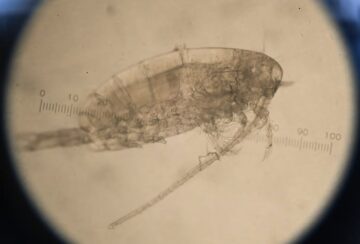Ferris Jabr in The Guardian:
 Broadly speaking, plankton fall into two big categories – the plant-like phytoplankton and the animal-like zooplankton – though quite a few species have characteristics of both. Cyanobacteria and other microbial, ocean-dwelling phytoplankton are Earth’s original photosynthesizers. About half of all photosynthesis on the planet today occurs within their cells.
Broadly speaking, plankton fall into two big categories – the plant-like phytoplankton and the animal-like zooplankton – though quite a few species have characteristics of both. Cyanobacteria and other microbial, ocean-dwelling phytoplankton are Earth’s original photosynthesizers. About half of all photosynthesis on the planet today occurs within their cells.
Single-celled algae known as diatoms comprise another widespread group of phytoplankton. Diatoms have glass exoskeletons: they encase themselves in rigid, perforated and often iridescent capsules of silica, the main component of glass, which fit together as neatly as the two halves of a cookie tin. A different group of microalgae, the coccolithophores, also sheathe themselves in armour – made not of glass but of chalk. They construct shells out of overlapping scales of calcium carbonate, the mineral from which limestone and marble are composed, and which was once commonly used to write on blackboards.
Just as plants form the base of the food chain on land, phytoplankton nourish the seas. Zooplankton eat their green cousins as well as each other. Radiolarians are single-celled zooplankton that, like diatoms, produce glass skeletons from silica.
More here.
Enjoying the content on 3QD? Help keep us going by donating now.
